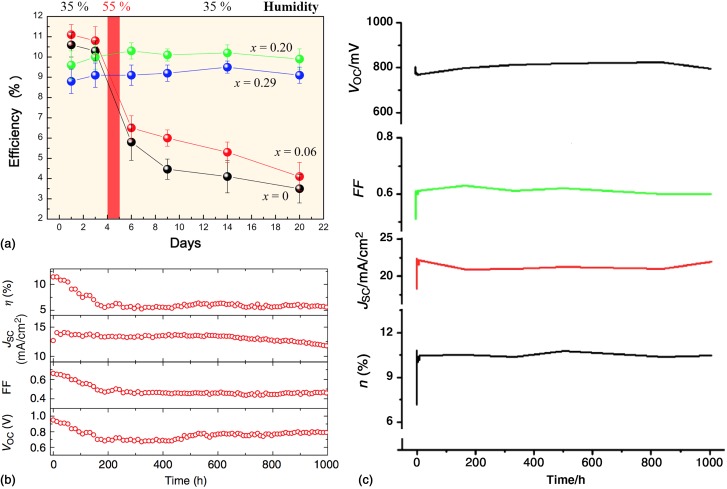Figure 7.
(a) Comparison of the stability of solar cells made from mixed perovskites CH3NH3Pb(I1−xBrx)3. Devices were stored in air without encapsulation and tested periodically. On the fourth day the devices were exposed to 55% humidity to evaluate the effect of water on their stability. (b) Stability of a solar cell made from CH3NH3PbI3−xClx on an alumina scaffold under continuous illumination of 76.5 mW/cm2 (~3/4 one-sun intensity) at 40 °C. The device was encapsulated in a nitrogen environment. (c) Stability over 42 days (1008 h) of a perovskite solar cell made from mixed organic cations CH3NH3PbI3 and 5-ammoniumvaleric acid. The unsealed device was continuously illuminated under one-sun, A.M. 1.5 conditions in air, although the carbon back contact is expected to provide some encapsulation. Panel (a) is reproduced with permission from Ref. 38, copyright 2013, American Chemical Society. Panel (b) is reproduced with permission from Ref. 134. Copyright 2013, Nature Publishing Group. Panel (c) is adapted with permission from the supplementary materials from Ref. 135. Copyright 2013, American Association for the Advancement of Science.

